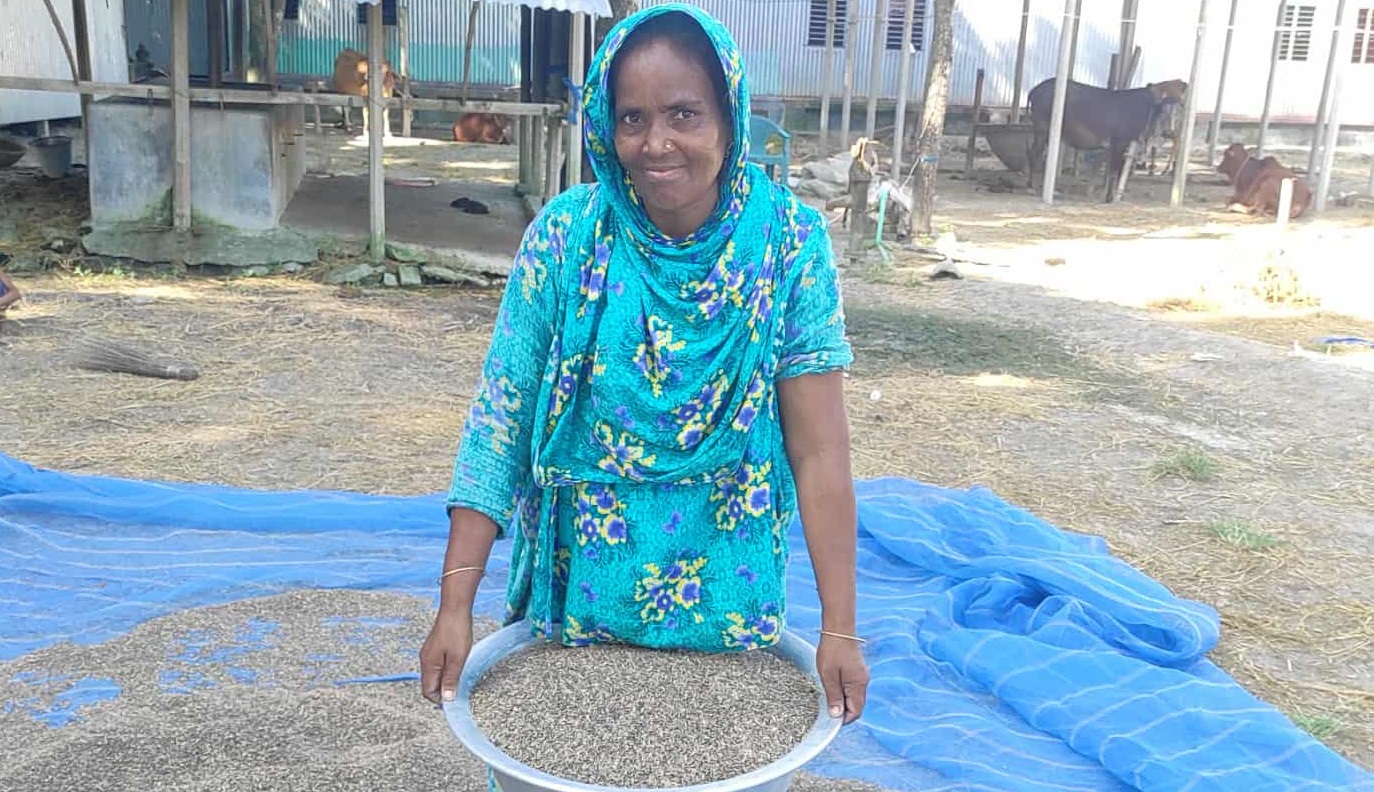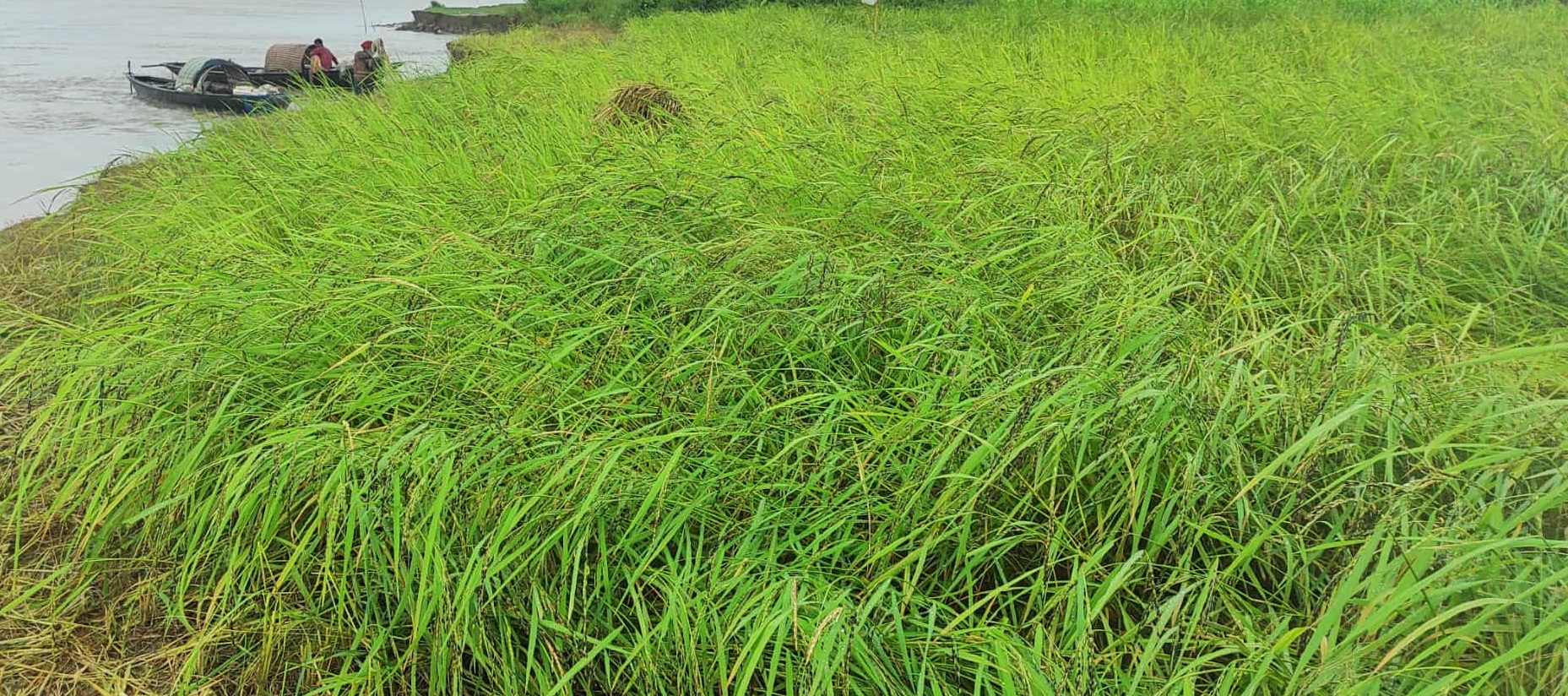By Mukter Hossain, from Harirampur, Manikganj
Parangi variety of Aus rice is playing a vital role in ensuring food supply for farmers in the char (riverine) areas, serving as a safe source of food and resilience against floods and natural disasters. Reflecting on this year’s success, farmer Faruk Shikder said, “With the extent of Aus cultivation in the char this season, food needs of at least 80% of the people can be met.”
He shared that he cultivated Parangi Aus rice on 10 bighas of land. The harvest has been timely, and he is preparing to thresh, dry, and store the rice. From this land, he expects about 80 maunds of paddy, of which 40 maunds will meet his family’s needs, while the rest will be sold in the market. Presently, each maund of paddy is being sold at BDT 1100–1200.

Nasir, a young farmer from Enayetpur village, mentioned that compared to last year, Aus cultivation increased this year in Azimnagar Union. According to the Upazila Agriculture Office, in Lechraganj Union alone, Aus rice has been cultivated on 1,000 hectares of land this season.
Momtaz Begum, a farmer from Patgram Char village of Lechraganj Union, said, “Aus cultivation is less costly, requires little chemical fertilizer or pesticide, and its rice is tasty. We can consider Aus as a safe food source.” She expressed hope that next year, Aus cultivation will expand further in Harirampur and other parts of Manikganj, strengthening food security during times of disaster.

Farmer and former UP member Shahid Molla of the same union said, “By cultivating Aus during the Aus season, farmers contribute to food security. But due to river erosion, many farmlands are being lost.” He mentioned that in 2024–25, about 300 families in Patgram, Gangadhordi, and Harihardia villages lost their homesteads and croplands due to river erosion, placing them at risk of food insecurity.
It is to mention that Harirampur in Manikganj is a flood-prone upazila. Due to climate change, farmers are increasingly adopting diversified crops to cope with risks. Particularly in the monsoon, Aus cultivation has become one of the most important options. Although Aus and Aman crops are often damaged by floods, this year’s relatively low floodwater allowed farmers to harvest Aus successfully and sell it at fair prices.
